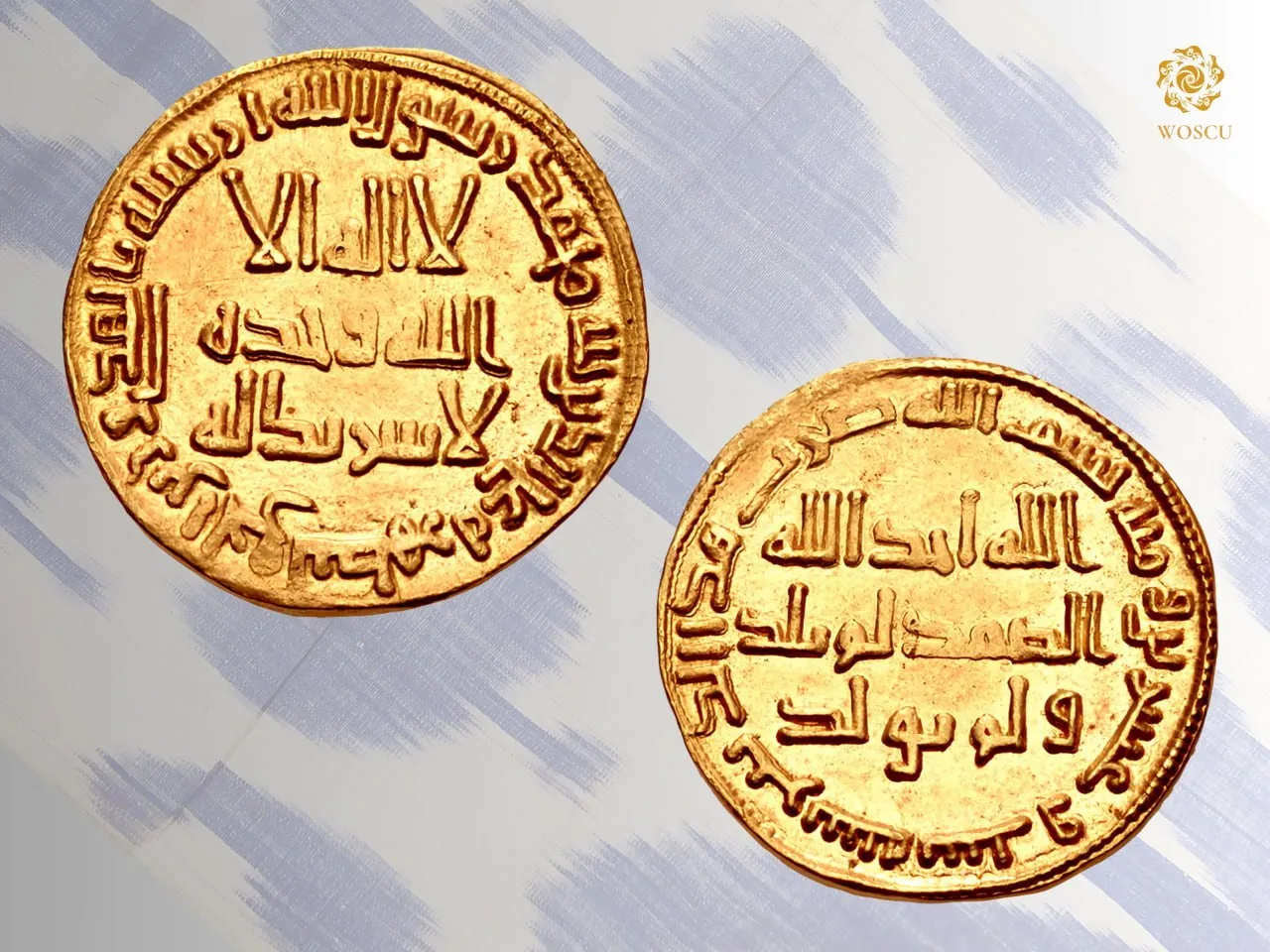
The spread of Islam began in the region, making conditions for minting coins characteristic of the Muslim world. The reproduction of animals on coins even then occurred extremely rare, whereas Arabic monotheistic formulas and other inscriptions appeared, which were mainly Quranic quotes, indications of the year (according to the Muslim calendar) and the place of issue, later – the rulers’ names.
The Arabic legends on the coins of that period were mainly written in the Kufic script. Another feature of the coins related to the early Islamic period is the appearance of a small square with four dots at the corners. This meant that the ruler on whose behalf these coins were minted was elected and crowned by the people.
According to the coronation tradition, on Friday, the future ruler sat down on a white carpet facing Mecca, and the most respected confidants lifted him up three times. After this ceremony, the Khan could mount the throne. Thus, the image of a small square and four dots is a graphic designation of a white carpet on which the Khan sat and four people lifting him up.
You can learn more about the topic in the book-album "The Collection of the Ichan-Kala State Museum-Reserve" (Volume XLVII) in the series "Сultural legacy of Uzbekistan in the world collections".
The main sponsor of the project is the oilfield services company Eriell-Group.
